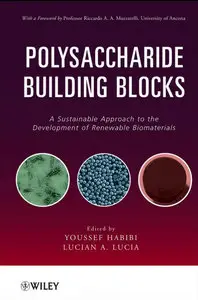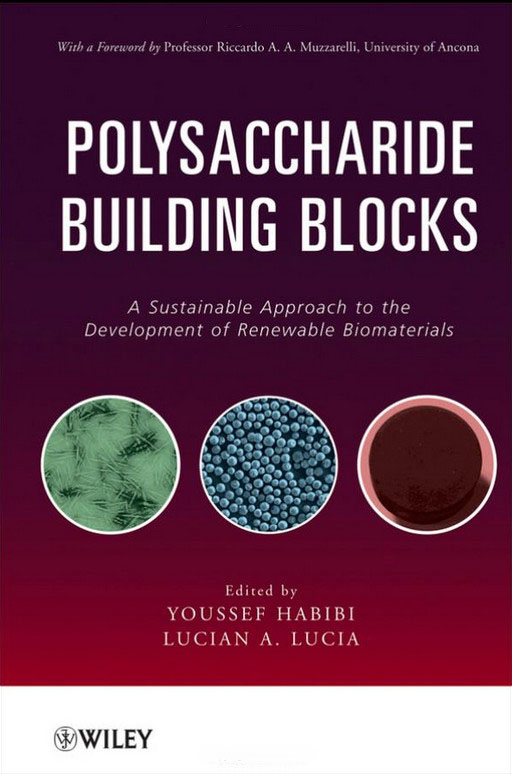Polysaccharide Building Blocks: A Sustainable Approach to the Development of Renewable Biomaterials
by Youssef Habibi, Lucian A. Lucia
English | 2012 | ISBN: 0470874198 | 430 pages | PDF | 5.52 MB
by Youssef Habibi, Lucian A. Lucia
English | 2012 | ISBN: 0470874198 | 430 pages | PDF | 5.52 MB
This book is an archival reference for the evolving field of biomaterials and their applications in society, focusing on their composition, properties, characterization, chemistry and applications in bioenergy, chemicals, and novel materials and biomaterials. It has broad appeal due to the recent heightened awareness around bioenergy and biomass as potential replacements for petroleum feedstocks. The book is divided into three parts: cellulose-based biomaterials, chitin and chitosan biomaterials, and hemicelluloses and other polysaccharides. Each chapter addresses a separate biomaterial, discussing its chemical, physical, and biological attributes, and hones in on each compound's intrinsic tunability for numerous chemical transformations. In the current quest for a "green" economy and resources, this book will help inspire scientists towards novel sources for chemicals, materials, and energy in the years to come.
From the Back Cover
Provides the foundation needed to develop renewable biofuels and biomaterials
Polysaccharides such as cellulose, chitin, and starch are among the most abundant biomaterials on our planet. Due to their enormous potential for processing into renewable biomaterials, they have become the subject of increasing research around the world. Polysaccharide Building Blocks brings together all the latest discoveries and applications of polysaccharides, providing readers with an up-to-date understanding of their physical, chemical, and biological properties. Moreover, the authors discuss the inherent "tunability" of polysaccharides, explaining how and why they are ideal for the development and manufacturing of new sustainable materials.
The book begins with a fundamental overview of recent advances in cellulosic chemistry. Next, it covers such important topics as:
- The ability of some polysaccharides to be processed in nano-sized building blocks promoting the emergence of engineered nanomaterials based on natural polysaccharides
- Chitin's potential in structural and functional nanocomposite applications and biomedical applications such as bioadhesives and hemostatics
- Emerging applications that take advantage of the electrical conductivity of polysaccharides
- Ability of porous polysaccharides to deliver new, valuable absorption, storage, and delivery functionalities
- Chemical and physical properties as well as techniques and approaches for processing starch-based bio-nanocomposites
- Potential uses of heteropolysaccharides as biomaterials
Each chapter has been contributed by one or more leading international experts in the field of renewable biomaterials. In addition to reviewing the current state of the science, the authors recommend future directions in research and conclude each chapter with a list of references guiding readers to the primary literature in the field.
This fundamental review of the chemistry and engineering of renewable poly-saccharides provides the foundation that scientists need to develop a broad range of renewable materials and applications that are essential for a green economy and a sustainable planet.
Please No mirrors.



